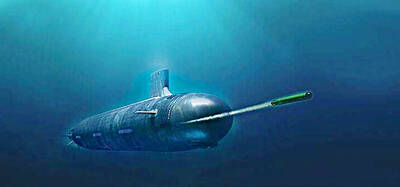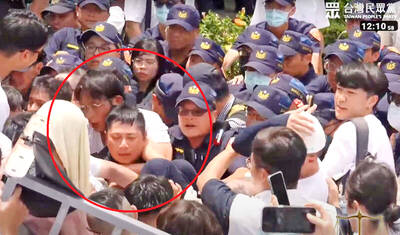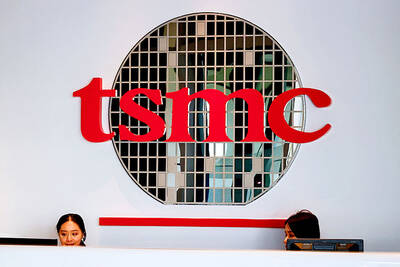More than a month after the 921 earthquake, the National Science Council (NSC) has completed a detailed map of the Chelungpu fault (
Highly anticipated by building contractors, the map of the Chelungpu fault, which has been drawn to a 1:5,000 ratio, was produced by 21 academics who have been conducting field investigations since the earthquake.
At the time of the quake, the most precise fault maps available were those of a 1:100,000 ratio, while the official one available from the Central Geological Survey (CGS) was of a 1:500,000 ratio.
"The NSC's newly produced Chelungpu fault map will be useful in considering rebuilding plans because construction prohibition zones and restricted zones can be identified by referring to it," Huang Chi-yue (
Huang said it would be easy to tell how far the fault is from damaged structures if CPA officials are making administrative maps of townships along the Chelungpu fault using the same scale as that of the NSC map.
"However, to better identify permanent prohibited zones and restricted zones along the fault, geologists have been given a tougher job -- producing a map of the same fault with a 1:1,000 ratio. This more detailed map should be completed by Dec. 15," he said.
NSC director Huang Chen-tai (
The 1:1,000 map, he added, would present the recorded geologic characters of the fault and would become an excellent reference to other thrust faults in western Taiwan.
Huang said scientists had discussed how to produce a detailed overall fault map, which would be more precise than any fault maps currently in use.
One of the challenges for contractors during rebuilding will be understanding exactly where the fault line lies. The ability to pinpoint the exact location of the fault has become a contentious point between construction engineers and scientists.
Taiwan is creased with a number of fault lines and geologists have said that it is impractical, if not impossible to map out all sections of every fault line on the island. Moreover, they say that increasing the detail of maps from 1:100,000 -- the ratio used by geologists for making scientific surveys -- to 1:1,000 in an invitation for error.
Builders argue that the more detailed maps are necessary for making blueprints that have the degree of accuracy that they are familiar with.
The builders say that maps currently available do not have nearly enough detail to allow them to know with certainty if they are building the specified distance away from an active fault line.
Scientists say the priority should be producing an official fault map using a 1:25,000 ratio, a standard which has been adopted by the US, Japan and other countries.
"It's not realistic to produce precise fault maps at 1:1,000. For geologists, the difficulty is knowing exactly where the faults are, especially those deep underground," said Shih Ruey-chyuan (石瑞銓), a seismologist from National Chung Cheng University.
"Instead of relying solely on fault maps, builders should make comprehensive site inspections before they break ground on any structure," said Tsai Yi-ben (蔡義本), professor and dean of the College of Earth Sciences at National Central University.
According to one British scientist who worked in Taiwan after the quake, fault maps are an essential guide for builders.
"If detailed maps are not available at construction sites, engineers will have to deal more with local conditions," said Colin Taylor, a civil engineering professor from Bristol University.
He said that the fault maps are needed either for scientists to identify the sources and mechanism of major earthquakes or for engineers to use during construction.
Although the UK is relatively small, its geology has been studied for more than 150 years.
"The governmental British Geological Survey has produced quite detailed geological maps of the UK in various scales. The most detailed one is 1:1,000," Taylor said.
Another engineer, Dave Edge from the UK-based WS Atkins Group, an engineering consulting firm, stressed the need for accurate maps: "One cannot be sure that the law [prohibiting the building of houses closer than 15 meters from a fault line] is successful unless one knows actually where the fault lines are."

FIREPOWER: On top of the torpedoes, the military would procure Kestrel II anti-tank weapons systems to replace aging license-produced M72 LAW launchers Taiwan is to receive US-made Mark 48 torpedoes and training simulators over the next three years, following delays that hampered the navy’s operational readiness, the Ministry of National Defense’s latest budget proposal showed. The navy next year would acquire four training simulator systems for the torpedoes and take receipt of 14 torpedoes in 2027 and 10 torpedoes in 2028, the ministry said in its budget for the next fiscal year. The torpedoes would almost certainly be utilized in the navy’s two upgraded Chien Lung-class submarines and the indigenously developed Hai Kun, should the attack sub successfully reach operational status. US President Donald Trump

TPP RALLY: The clashes occurred near the Chiang Kai-shek Memorial Hall on Saturday at a rally to mark the anniversary of a raid on former TPP chairman Ko Wen-je People who clashed with police at a Taiwan People’s Party (TPP) rally in Taipei on Saturday would be referred to prosecutors for investigation, said the Ministry of the Interior, which oversees the National Police Agency. Taipei police had collected evidence of obstruction of public officials and coercion by “disorderly” demonstrators, as well as contraventions of the Assembly and Parade Act (集會遊行法), the ministry said in a statement on Sunday. It added that amid the “severe pushing and jostling” by some demonstrators, eight police officers were injured, including one who was sent to hospital after losing consciousness, allegedly due to heat stroke. The Taipei

NO LIVERPOOL TRIP: Taiwan’s Lin Yu-ting, who won a gold medal in the boxing at the Paris Olympics, was embroiled in controversy about her gender at that event Taiwanese boxer Lin Yu-ting (林郁婷) will not attend this year’s World Boxing Championships in Liverpool, England, due to a lack of response regarding her sex tests from the organizer, World Boxing. The national boxing association on Monday said that it had submitted all required tests to World Boxing, but had not received a response as of Monday, the departure day for the championships. It said the decision for Lin to skip the championships was made to protect its athletes, ensuring they would not travel to the UK without a guarantee of participation. Lin, who won a gold medal in the women’s 57kg boxing

The US has revoked Taiwan Semiconductor Manufacturing Co’s (TSMC, 台積電) authorization to freely ship essential gear to its main Chinese chipmaking base, potentially curtailing its production capabilities at that older-generation facility. American officials recently informed TSMC of their decision to end the Taiwanese chipmaker’s so-called validated end user (VEU) status for its Nanjing site. The action mirrors steps the US took to revoke VEU designations for China facilities owned by Samsung Electronics Co and SK Hynix Inc. The waivers are set to expire in about four months. “TSMC has received notification from the US Government that our VEU authorization for TSMC Nanjing